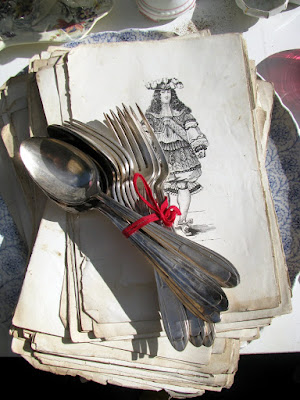Orange Opera Festival
when: 15 Jul - 7 Aug 2010 (annual)
where: Theatre Antique, Orange Les Chorégies d'Orange, created in 1860, is France's oldest opera festival, held at the Theatre Antique, a magnificent Roman amphitheatre. The venue seats some 9000 spectators and has retained its acoustic stage wall, which was restored in the early 1800s.
Les Chorégies d'Orange, created in 1860, is France's oldest opera festival, held at the Theatre Antique, a magnificent Roman amphitheatre. The venue seats some 9000 spectators and has retained its acoustic stage wall, which was restored in the early 1800s.he production to look forward to is
Gounod's Mireille
Wednesday 4th August 9.30 pmIn case of bad weather, rescheduled on the 5th August at 9.30 pm
Saturday 7th August 9.30 pmIn case of bad weather, rescheduled on the 8th August at 9.30 pm
Conductor Alain Altinoglu*
Producer Robert Fortune
Stage designer Christophe Vallaux* / Robert Fortune
Costumes Rosalie Varda
Lighting Jacques Rouveyrollis
Mireille Nathalie Manfrino*
Taven Marie-Ange Todorovitch
Vincenette Karen Vourc’h*
Clémence Caroline Mutel
The voice / Andreloun Amel Brahim Djelloul
Vincent Florian Laconi
Ourrias Franck Ferrari
Ramon Nicolas Cavallier
Ambroise Jean-Marie Frémeau*
The ferryman Jean-Marie Delpas
Orchestre National de Bordeaux-Aquitaine
Choruses from Opéra-Théâtre d'Avignon et des Pays de Vaucluse,
from Opéra de Nice and from Opéra de Marseille
Maîtrise des Bouches-du-Rhône
Ballet de l’Opéra-Théâtre d’Avignon et des Pays de Vaucluse
 *For the first time at the Chorégies Contact Details
*For the first time at the Chorégies Contact DetailsName: Box Office (adjacent to the Roman Theatre)
Email: billetterie@choregies.com
Phone: +33 (0) 4 90 34 24 24
Venue Information: Theatre Antique
Full Name: Theatre Antique, Orange, France
Cost: €7.90
Address: Rue Madeleine Roch 84100
Directions: By Train: TGV to Orang.
Contact Details: Theatre Antique
Phone: +33 (0) 4 90 51 17 60
Other Information: Theatre Antique
Website:
Theatre Antique Website
Les Chorégies d'OrangeThe Chorégies d'Orange festival dates from 1860 and is the oldest festival in France. Over the years, the Chorégies have retained all of their freshness and originality, due in part to the name, which comes from the Greek "choreos", linking them to the Grecian-Latin tradition, to the magnificent site where they take place: the perfectly preserved Roman Theatre, which can hold 9,000 spectators, and which still has its stage wall, the guarantee of exceptional acoustics, and to their vocation, which is lyrical and musical performances, placing them among the very best French festivals and certainly one with an indisputable international reputation.
The first performance took place in 1869, with "Joseph", an opera by Mehul. At that time, the classic Greek and Roman tragedies were staged there, and the Roman Theatre was also used to promote the French dramatic authors of the era. The use of the Roman Theatre as the stage for lyrical and musical performances became prevalent in 1971, with the creation of the "Nouvelles Chorégies", which met with immediate, overwhelming success. All of the world's great lyrical artists have performed there, bestowing international prestige on this ideal stage which continues to prove itself with each passing year. The Roman TheatreThe Roman Theatre in Orange, one of the most beautiful monuments in France, is testimony to the Roman era. It is the only building of its kind which still has its acoustic stage wall, whose size is quite impressive: 103 meters long, 37 meters high, 1.80 meters thick. The stage itself is 65 meters long, with optimally useful space of 47 meters. Depth varies between 12 and 16 meters. Following the fall of the Roman Empire, the Roman Theatre was no longer used as a place for entertainment. In 1562, it was even transformed into a refuge for the population. Restoration only began in the early 1800's, when the bleachers were rebuilt.
Situated in Provence, the Roman Theatre of Orange is the best preserved Roman theatre in the western world and has been designated a World Heritage Site by UNESCO. Visit this impressive monument built under Emperor Augustus in the 1st century A.D. An audio-guided tour and film will enable you to discover the history of the theatre and its place in antiquity. Opposite the theatre, the Art and History Museum of Orange exhibits collections from Antiquity to the 19th century. Great monuments, an exciting journey through Imperial Rome.© Photos : Studio Grand Angle - Orange / Studio Bernateau - OrangeClick on Link: Chateau Lalinde : The perfect venue for your eventRelocation Orientation in France



















































